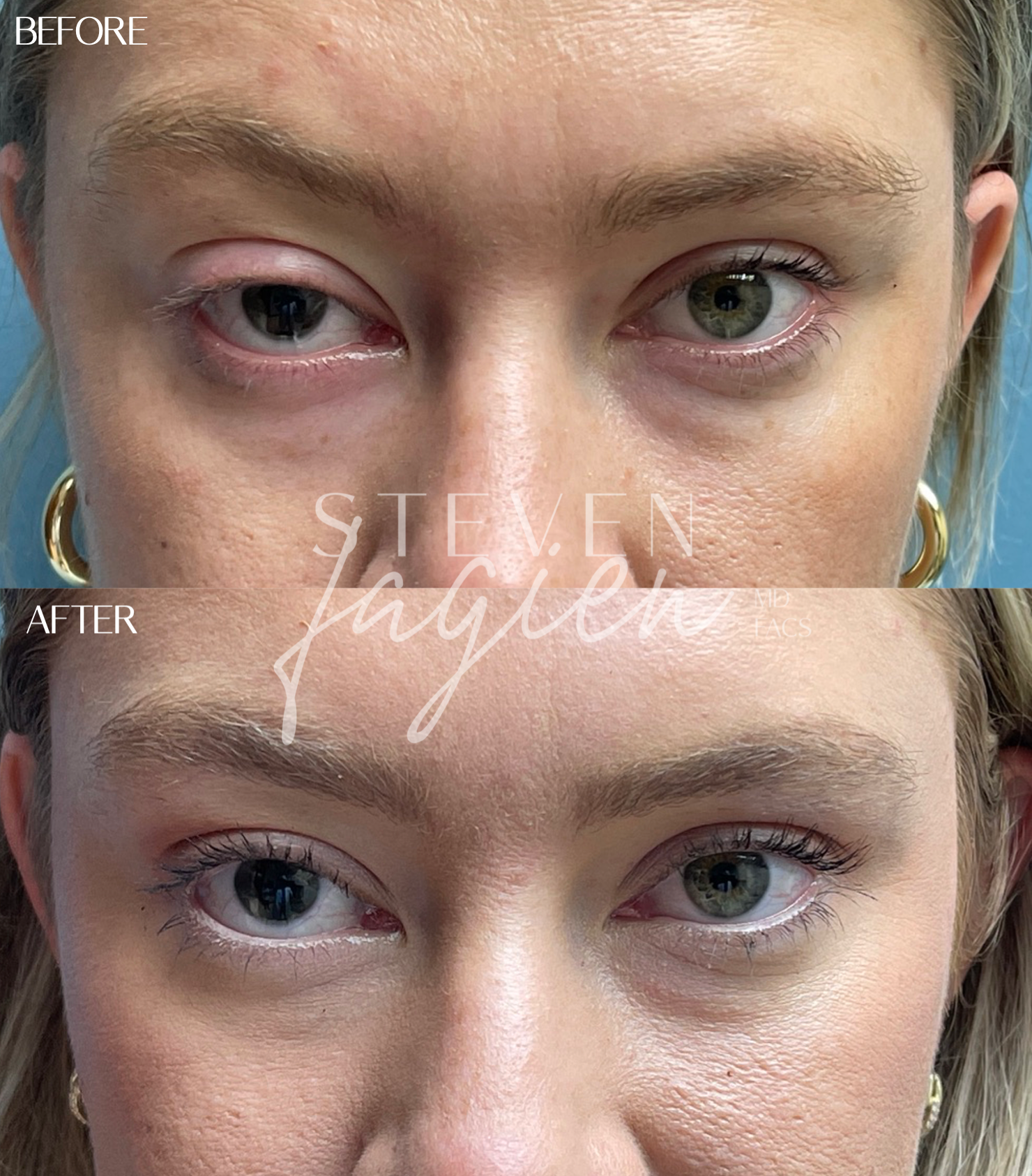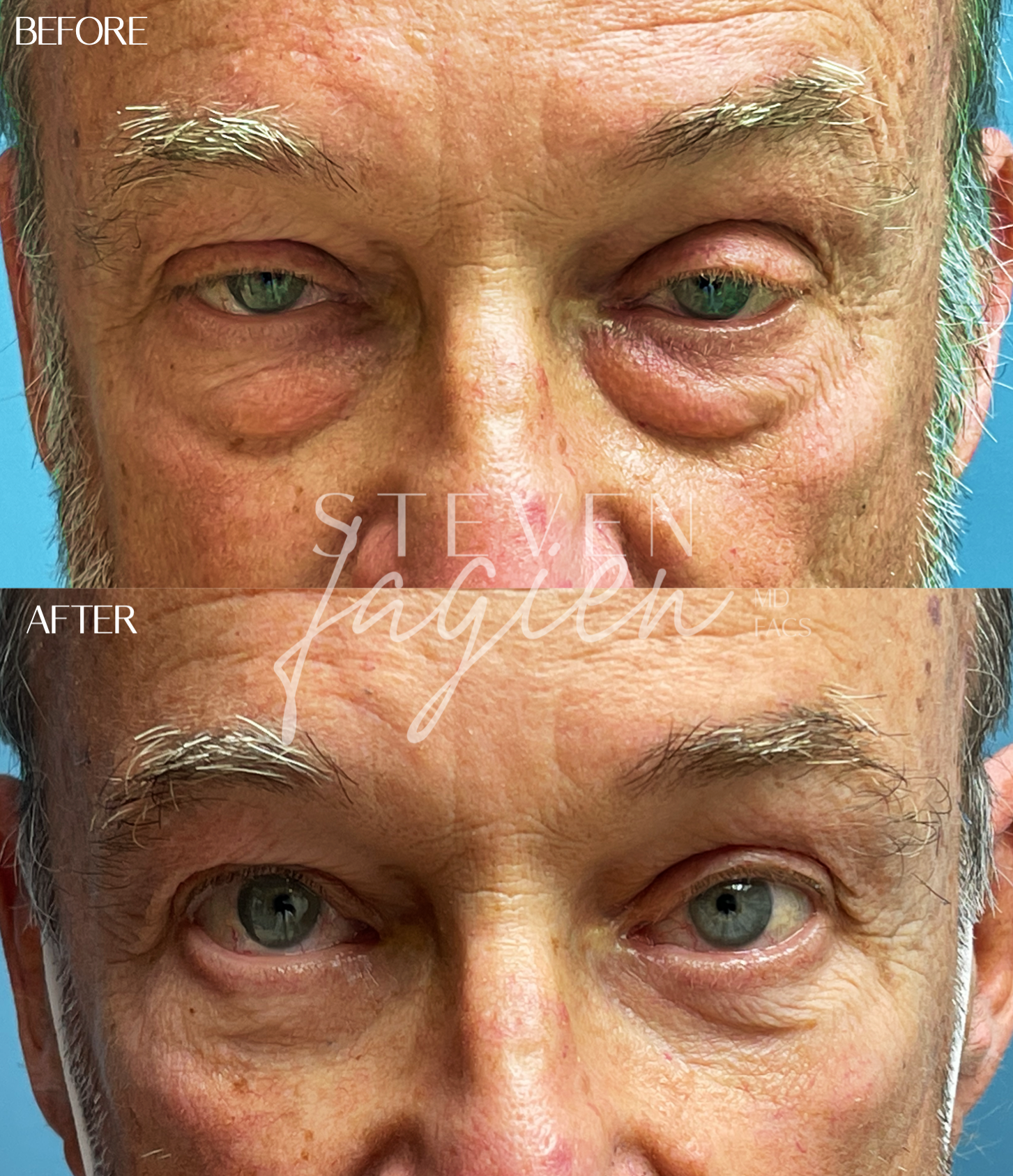Ptosis (TOE-sis), or drooping of the upper eyelid, is a relatively common condition that can cause the affected eye to appear smaller. The eyelid may droop only slightly or may droop enough to cover the pupil and potentially interfere with vision. While more common with aging, this can also occur in younger patients. This condition can be caused by stretching of the tissues that help elevate the upper eyelid, muscle weakness, nerve damage, or can be part of the eyelid aging process.
In many patients with ptosis, their ptosis may be very noticeable in one eye but subtle and easily missed in the apparently “normal” eye. A close examination by Dr. Fagien or Dr. Vaca is necessary to help evaluate for ptosis (and assess if there is bilateral ptosis) to determine the most appropriate option to attain improved symmetry between your eyes.
Ptosis can be surgically corrected and result in a significantly brighter and more youthful appearance of the eyes. Ptosis surgery is often combined with other cosmetic eyelid surgical procedures including an upper blepharoplasty, lower blepharoplasty, or a browlift for a more comprehensive and aesthetically balanced result.




Various medicated eye drops can be used for temporary improvement of ptosis such as Upneeq® – the effect of these eye drops can last several hours. Ultimately, surgical management provides long lasting correction of upper eyelid ptosis.
The risk of any major complication with ptosis surgery is very rare – nonetheless, all surgical procedures carry a degree of risk.
Bleeding is very rare but can occur.
Irritation & dryness of the eye can occur after surgery. If this occurs, it gradually improves over time and can be treated with medicated or lubricating eye drops.
We all have natural asymmetries between each side of our face and eyelids – some people more than others. While one of the goals of surgery is to minimize any pre-existing asymmetry between the eyelids, it is important to know that some asymmetry will still exist. After surgery, patients tend to scrutinize their face more intently and may notice some pre-existing asymmetries for the first time.